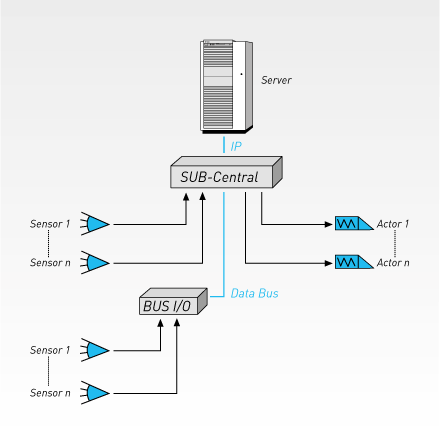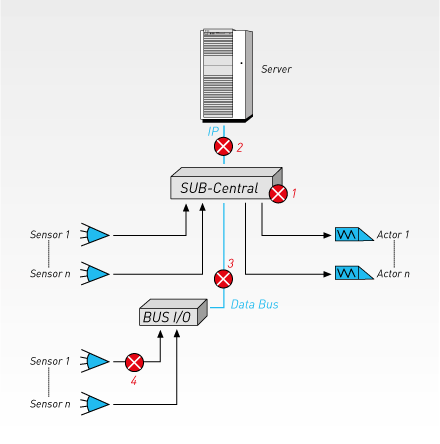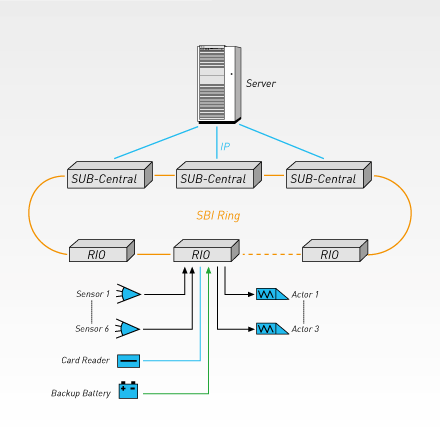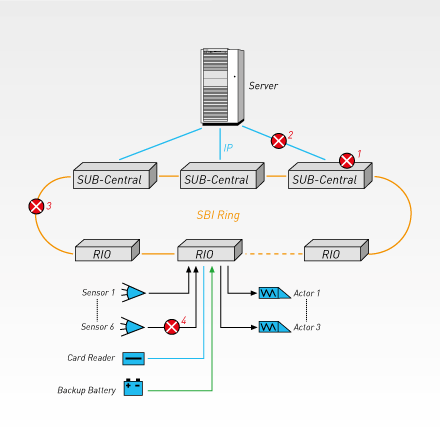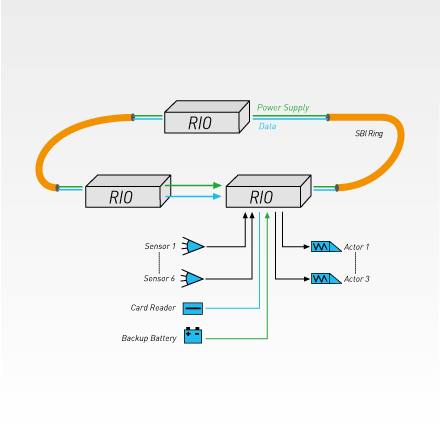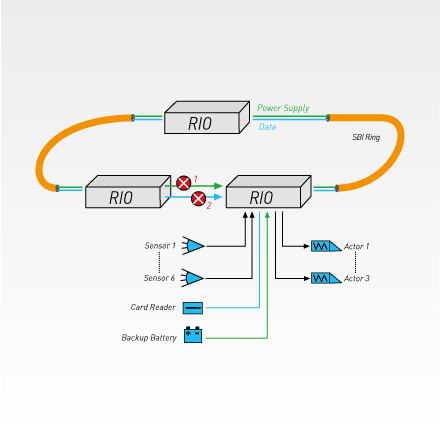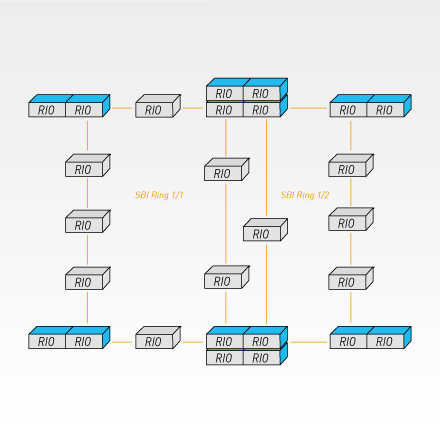TITAN SBI
Newest demands for high end security systems are going to more availability and cluster computing. Both demands are fulfilled with the new technology system TITAN SBI von TITAN electronic.
SBI (Security Bus Interface) is a high speed, high availability ring bus system with a special protocol to fulfil the following main requirements:
Cluster Computing
Central or sub-central units are not fix connected to sensors and actors
Encryption
Fulfills the latest requirements of encryption of data
Quality of Service
Uses existing resources efficiently and ensures the required level of service
Load Balancing between Server
Distributes high volumes of load across multiple servers in a network in order to deliver speed and performance
Message and Command Prioritisation
Maintaining all neccessary messages and commands in emergency
Routing Capability between Networks
Part of the network with routing capability even between the rings
Hardware Implementation
Highest demands on quality in every technology used
Free Scalability
Updating with more clients easily
The demand of cluster computing in the security means that the central or sub-central units are not fix connected to the sensors and actors. So that means the sensors and actors have to be connected to a network device which sends their
current messages and states to a cluster computing network. In that cluster there are some computers, SUB-Central database and logic to decide who is computing the result of that
sensor message. The decision is normally made according to the load balancing rules. The system is free scalable, because in case of more sensors the cluster can be updated accordingly with more computers.
The new SBI ring technology also fulfils the latest requirements of encryption of their data on the ring and is fully build up in hardware with wire speed capability. The whole protocol stack is down in hardware and not in software.
In case of larger systems the SBI technology provides multi SBI-Rings. Each of them is a part of a big network with routing capability between the rings. The SBI-Ring can also be used for transportation of data from one RS485
to another RS485 device.




